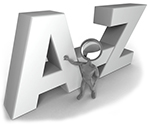Chartered Appraisers
Real Estate Consultants
Real Estate Consultants
| Term | Definition |
|---|---|
| Quebec Bar (Barreau du Québec) |
Lawyers practiced their profession in Québec well before the constitution of the Bar of Lower-Canada by a law passed on May 30, 1849 (the Upper-Canada Bar had obtained its charter in 1797). In New France, justice was rendered without the assistance of barristers, and from 1765, Governor James Murray bestowed a lawyer's authority on three notaries and a shopkeeper. The Québec community of lawyers, precursor to the bar, was created in 1779. This society demonstrated loyalty in its concern for affirming the independence of political and judicial powers, and in its will to improve the competence and morality of its members. The law of 1849 limited the practice of law to members of the bar who had to ensure that they were capable of fulfilling the duties with honour and integrity. To this end, the bar could adopt rules for the admission and discipline of its members. In the early days, the bar was made up of three districts (Montréal, Québec, Trois-Rivières), which held the essentials of power. The number of districts increased progressively (today there are 15 sections), and in 1967, a reform of the bar's structure centralized the majority of powers, which until then had been carried out by the sections. This reform enabled the bar to set up a permanent secretariat, a Bureau of Trustees, a centralized disciplinary process, and to found a professional school.
|
 > Consult our glossary
> Consult our glossary 88 Prince Street, Suite 201
Montreal, Quebec H3C 2M8
Tél: 514.844.4431